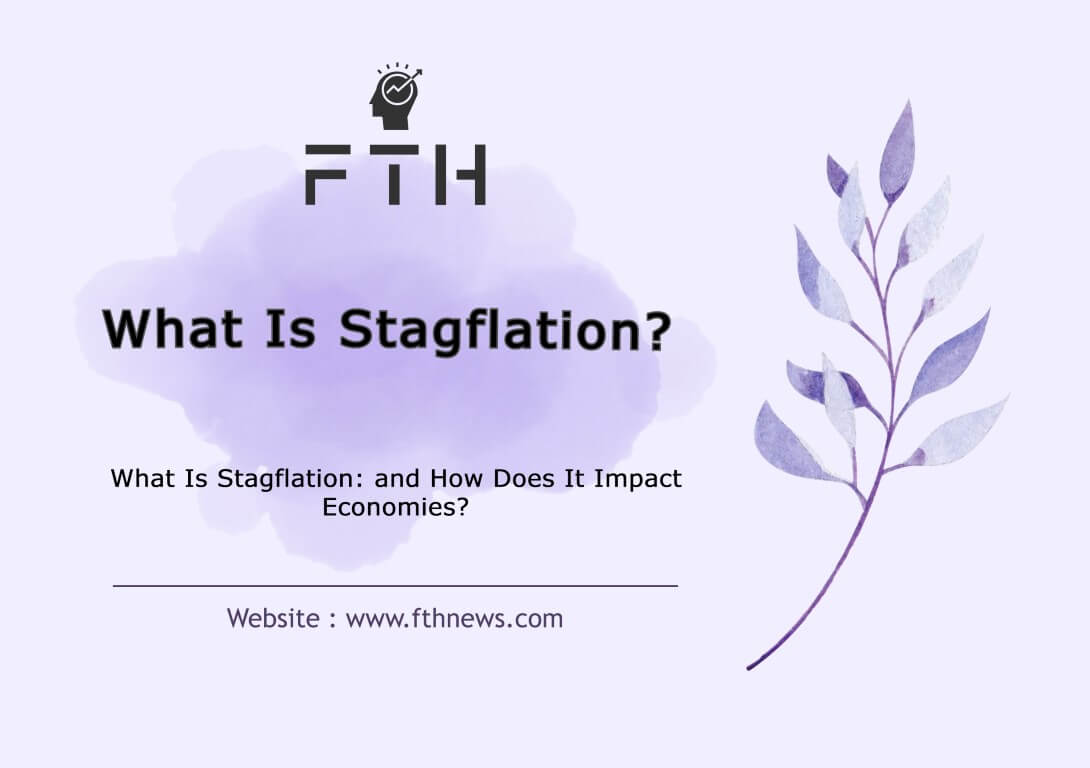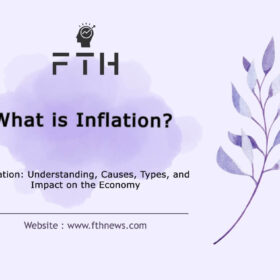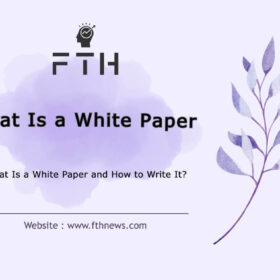
What Is Stagflation: and How Does It Impact Economies?
What Is Stagflation? Economics can be tricky, and there’s this one term, “stagflation,” that really puzzles people. Imagine an economy where prices keep going up, jobs are hard to come by, and growth is stuck. It’s like facing two opposite problems at the same time. Stagflation is that tricky situation.
We’re here to make sense of it. In this blog, we’ll break down what stagflation is, why it’s a big deal, and how we deal with it. Understanding stagflation is like having a secret decoder for the economy. It helps you make sense of what’s happening in the financial world and make better decisions.
So, let’s dive in and learn about “What Is Stagflation.”
Stagflation Definition
Stagflation is a complex economic phenomenon characterized by rising unemployment rates, negative economic growth, and high prices within an economy. While economic strategies exist to combat deflation and inflation individually, stagflation presents a unique challenge due to the coexistence of these contradictory effects, making it difficult to control the economic downturn.
In a typical recession, one approach to resolution is increasing the money supply. This action makes it easier for companies to borrow funds at lower interest rates, leading to increased business development and employment rates, effectively countering and preventing the recession. In such cases, economists and policymakers aim to control rising inflation by reducing the money supply to slow down its rate of increase. This is achieved by raising interest rates, which, unfortunately, has the side effect of making it more expensive for individuals and businesses to obtain loans. Consequently, both business owners and consumers borrow and spend less. This reduced demand helps halt the escalation of prices.
In essence, when an economy experiences stagflation, it is facing both a recession and inflation simultaneously. This unique economic challenge demands a nuanced approach to address its multiple components.
What is Stagflation?
Stagflation is a macroeconomic concept that was first introduced by Macleod, an English politician and minister of the treasury in 1965. This economic condition is characterized by the confluence of stagnation and inflation, creating a challenging situation in which an economy experiences negative economic growth and high unemployment, while also grappling with rising consumer prices.
The economic solutions typically used to combat these two conditions separately can exacerbate the challenges posed by stagflation, making it harder for the government to effectively address this combination of inflationary stagnation. Economic growth is commonly measured through a nation’s Gross Domestic Product (GDP), which has a direct relationship with the employment rate. In situations where the GDP is under performing and inflation is on the rise, severe deflation can be triggered, potentially leading to a more extensive financial crisis.
The Causes of Stagflation
Stagflation arises when the purchasing power of money declines while, simultaneously, the supply of goods and services diminishes. The specific causes of stagflation can vary depending on the historical context and different economic perspectives. Various economic theories, including monetary, Keynesian, and new classical models, offer distinct explanations for this complex economic phenomenon.
Distinguishing Deflation from Inflation
As mentioned earlier, inflationary stagnation is essentially a blend of inflation and economic stagnation. Inflation is often defined as the increase in the prices of goods and services or as a decrease in the purchasing power of currency. The factors contributing to the emergence of stagflation are multifaceted.
Contrasting Monetary and Fiscal Policy
In countries like the United States, central banks, such as the US Federal Reserve, manage the money supply, influencing the overall economy. Governments wield direct influence on the economy through monetary and tax policies. However, when there is a conflict between monetary and fiscal policies within a country, it can lead to inflation and reduced economic growth. Generally, any combination of fiscal policies aimed at reducing consumer spending while increasing the money supply tends to contribute to stagflation.
For instance, a government might raise taxes to reduce people’s income while the central bank simultaneously lowers interest rates. Consequently, the government’s policies lead to negative economic growth, while the central bank’s actions contribute to inflation.
The Shift from Gold to Fiat Currency
In the past, many major economies pegged the value of their currencies to gold, known as the gold standard. However, this standard was completely abandoned after World War II. Replacing the gold standard with fiat currency removed constraints on the money supply. This change made it easier for central banks to manage the economy but also introduced the risk of increased inflation and rising prices.
Rising Supply Costs
Stagflation can be triggered by an increase in the cost of producing goods and services, often referred to as a supply shock. This is particularly relevant to energy-related supply shocks. When production costs, including those associated with energy, surge, it results in higher prices for goods and services. As consumers experience reduced purchasing power due to elevated transportation and energy-related expenses, the likelihood of stagflation grows.
Dealing with Stagflation
The battle against inflationary stagnation involves the use of financial and monetary policies, but the specific policies employed depend on a country’s economic model and prevailing economic philosophy. Below, we outline various solutions along with their associated schools of thought.
Monetarists & Stagflation
Monetarists are economists who prioritize controlling the money supply as the key solution, viewing inflation as the most critical factor to manage. In this school of thought, monetarists start by reducing the money supply, which, in turn, curbs overall spending. While this strategy diminishes demand and the prices of goods and services, it often does not promote economic growth.
Supply-Side Economists & Stagflation
Another school of thought advocates increasing the supply in the economy while simultaneously reducing costs and enhancing efficiency. Measures such as controlling energy prices, making optimal investments, and subsidizing production help lower costs and bolster the overall supply within the economy. This, in turn, reduces prices for consumers, stimulates economic production, and mitigates unemployment.
Free Market Economy (Free Market Solutions)
Some economists contend that the most effective way to combat inflation is to leave it to the free market. A free market is characterized by competition as the primary determinant. The actions of buyers and sellers in a free economic system dictate what is produced, how much is produced, the production methods, and who benefits from it.
In a free market, profit is generated by selling goods or services at a price higher than their production cost. It becomes evident that without buyers for your product, there can be no profit. This approach reduces demand and inflation. The free market also utilizes the workforce more efficiently, resulting in lower unemployment rates.
Why is Stagflation Bad?
People tend to be happier when the economy is thriving, and prices remain stable or low. However, stagflation brings a disheartening mix of high prices and economic stagnation. As Brian Colton points out, “It’s a bad sign if you’re experiencing the dual burden of rising expenses alongside limited purchasing power, all while facing job insecurity.”
Addressing Stagflation is no easy task. It primarily falls under the purview of central banks, like the Federal Reserve, whose role is to ensure economic stability. Typically, the Federal Reserve targets an inflation rate of around 2 percent.
When inflation exceeds this threshold, central banks, including the Federal Reserve, often raise interest rates. This policy aims to make borrowing more expensive for households and businesses, ultimately reducing costs and taming inflation.
However, as economist Wilcox highlights, once people start to believe that inflation is here to stay, the situation becomes more challenging. Central banks are compelled to aggressively raise interest rates to rein in inflation. Unfortunately, this can lead to a sharp reduction in economic growth.
Why Stagflation Happens
Stagflation is a perplexing economic puzzle that occurs when a confluence of factors creates a complex and challenging situation. While experts continue to debate its precise causes, several key factors contribute to the emergence of stagflation:
1. Supply Shocks:
One prominent theory suggests that stagflation often results from supply shocks, such as sudden disruptions in the availability of key resources like oil. These supply shocks can lead to an increase in production costs, causing businesses to raise prices, which contributes to inflation. At the same time, these cost increases can hinder economic growth and employment, resulting in stagnation.
2. Excess Money Supply:
Another perspective points to the role of monetary policy. If there is too much money in circulation, it can stimulate demand for goods and services, potentially leading to inflation. However, when the economy is already experiencing stagnation, this inflation does not necessarily result in higher production or employment. Instead, it further exacerbates the complex nature of stagflation.
3. Labor Market Dynamics:
Some experts even attribute stagflation to labor market dynamics. The provision of extensive welfare benefits or other factors that reduce people’s motivation to work can lead to a decrease in productivity and employment, contributing to stagnation, even as prices continue to rise.
4. The Oil Shock:
One theory suggests that a sudden, substantial increase in oil prices, combined with decreased production, can lead to higher costs for goods and services and a surge in unemployment. This oil shock can disrupt economic stability and trigger stagflation.
5. Economic Policies:
Some economists point to poor economic policies as a cause of stagflation. For example, when the U.S. President Richard Nixon detached the U.S. dollar from the gold standard, it had consequences that contributed to stagflation.
In essence, stagflation is not the result of a single, clear cause but rather the interplay of multiple economic factors. This complexity extends to addressing stagflation, where conventional economic tools may not yield simple solutions. However, recognizing the potential risks associated with stagflation can help individuals and policymakers take steps to protect and preserve financial resources in uncertain economic climates.
The Impact of Stagflation on the Economy
Stagflation is a tough situation that brings a host of economic challenges. Here’s how it affects the economy:
Difficulty for Businesses: When an economy is shrinking, it becomes tough for businesses to operate efficiently. Many companies struggle to continue their operations, and some are even forced to close down.
Reduced Production and Employment: The ongoing economic downturn results in a drop in both production and employment. As unemployment rises due to the recession, prices continue to increase, making it even harder for the economy to recover.
Lower Demand: The combination of rising unemployment and higher prices leads to a decrease in the demand for goods and services. People have less money to spend, which further hinders economic growth.
In stagflation, there’s a kind of feedback loop where inflation and economic stagnation feed into each other, creating a challenging cycle that can paralyze a country’s economy for an extended period.
Measuring Stagflation
Stagflation is typically assessed using the “Misery Index,” which combines the unemployment rate and consumer price index inflation (CPI). Normally, unemployment and inflation move in opposite directions. When inflation spikes to higher-than-normal levels, it signals stagflation.
The weighted average CPI tracks the cost of essential goods and services like food, clothing, and health. It also gauges the average prices of a consumer basket to understand living costs and economic impact.
CPI is a widely used tool to analyze and combat inflation, aiding economists in understanding consumer behavior and determining GDP. It also helps investors factor in inflation for return calculations. However, some economists debate its suitability for inflation measurement due to differing opinions on data interpretation.
This straightforward version provides an overview of how stagflation is measured, emphasizing the importance of the Misery Index and the role of CPI in economic analysis and investment. If you have more sections or specific queries, please feel free to ask.
How Stagflation Affects the Market
When stagflation strikes, it can significantly impact financial markets in several ways:
Minimal or Negative Growth:
Stagflation often results in sluggish or negative economic growth, leading to reduced income and even income stagnation. In such conditions, consumers tend to have less disposable income for investments, leading to decreased purchases of assets like cryptocurrencies. Investors may need to liquidate assets for day-to-day expenses. Moreover, larger investors may shy away from high-risk assets, including stocks and cryptocurrencies, due to the economic uncertainty and decreased demand.
Government Actions:
Governments typically prioritize controlling inflation during stagflation. This often involves reducing the money supply by increasing interest rates. Higher interest rates discourage borrowing and investment in high-risk, low-return assets, impacting cryptocurrency markets as well. On the flip side, if the government opts for quantitative easing (QE) and reduces interest rates to stimulate economic growth, the cryptocurrency markets could respond positively due to the increased money supply.
Hedging Strategy:
Some investors turn to Bitcoin as a hedge against rising inflation. With inflation eroding the real value of national currencies, Bitcoin, with its limited supply and circulation, becomes an attractive store of wealth. However, this strategy is most effective for long-term investors who hold Bitcoin through periods of inflation or stagflation. Short-term or in-the-moment inflationary stagnation may not make this strategy as effective.
Historical Examples:
The oil crisis of 1973 provides an example of stagflation’s impact. Following the oil embargo by OPEC countries, oil prices skyrocketed, leading to supply chain disruptions and increased consumer prices. To counter the economic effects, central banks, including the U.S. Federal Reserve, reduced interest rates to encourage growth. However, this approach did not produce the expected results, as much of consumer spending was directed toward oil and energy costs, contributing to the stagflation problem.
In summary, stagflation can disrupt financial markets by reducing consumer spending, influencing government policies, affecting asset demand, and offering opportunities for certain hedging strategies. These effects can vary based on the specific circumstances of stagflation and the responses of governments and investors.














